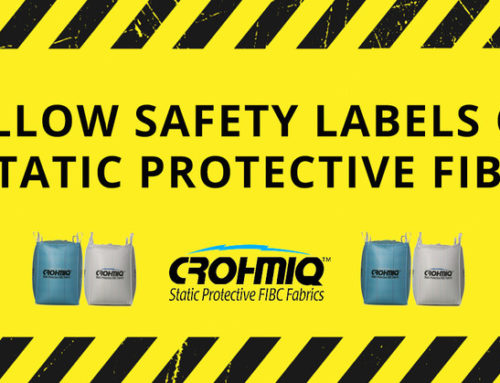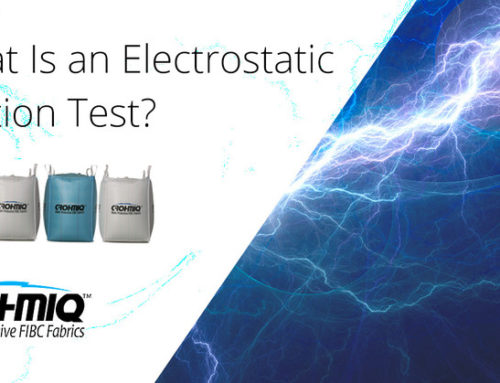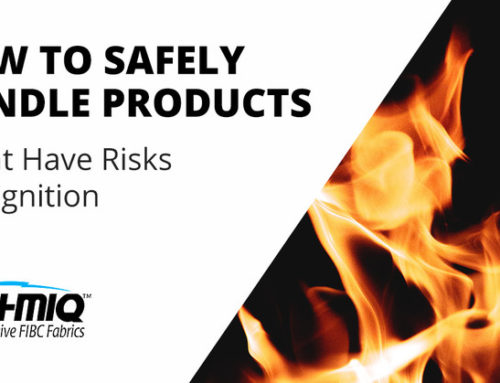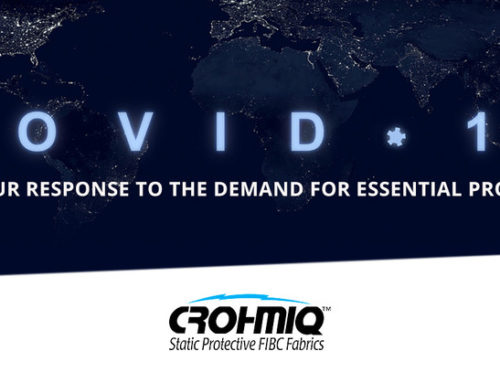Texene has now completed relocation of its headquarters and factory operations from Summerville, SC to Miami Lakes, FL. The new factory incorporates production of CROHMIQ Yarns™, the vital electrostatic control element of CROHMIQ® Static Protective Type D FIBC Fabrics. State-of-the-art yarn production machinery has been installed and is fully commissioned and operational. Key production personnel have been relocated to the new factory, and additional production and testing technicians have been recruited. The new facility is designed to optimize yarn production efficiency and increase capacity to meet future market demand.
Alongside the yarn production and shipping operations, the new factory building also incorporates Texene’s FIBC safety performance testing laboratories. An existing 12,000 cu.ft thermally insulated chamber has been partitioned and remodelled to accommodate two full-scale, environmentally controlled FIBC testing laboratories. The test rig and instrumentation from the old laboratory in Summerville has been installed in one of the new laboratories. Located right next door is a completely new laboratory fitted out with duplicate equipment and instrumentation. Both laboratories comply with the requirements of the International Standard IEC 61340-4-4 Ed. 3.0. As Technical Services Director, Dr Paul Holdstock explains, for any safety critical product, regular and frequent testing according to industry recognised International Standards is crucial. From the earliest days of its development, full scale testing has always been part of the CROHMIQ philosophy. The new facility in Miami Lakes increases the potential capacity for our Continuous Safety Certification Program™.
Having two laboratories allows Texene to maintain its regular safety testing, whilst offering further opportunity to research and develop improvements to the CROHMIQ product, and to develop new products. Texene’s commitment to ongoing R&D has resulted in multiple patents for CROHMIQ in its original and improved iterations. This work ensures that CROHMIQ continues to provide the protection required by an industry that is ever more safety aware, and in which safety standards are becoming increasingly more rigorous.
The two test methods required to demonstrate compliance with the requirements of IEC 61340-4-4 Ed. 3.0 for Type D FIBC are breakdown voltage and ignition testing. Breakdown voltage is the same test used to qualify Type B FIBC. A breakdown voltage of less than 6 kV ensures that dangerous propagating brush discharges cannot occur. It is the only requirement for Type B FIBC, but it is also a requirement for Type C FIBC and Type D FIBC. Ignition testing confirms that incendiary discharges cannot occur from Type D FIBC when filled with highly charged products in the presence of combustible or flammable atmospheres. In addition to these tests, both of Texene’s new laboratories have equipment for measuring electrical resistance, as used to qualify Type C FIBC, electrostatic field and surface voltage, charge decay time, and other electrostatic parameters.
The relocation represents a major investment, and is described by Texene’s Managing Director, Carlos Echeverria, as a significant phase in Texene’s progress as the world’s leading manufacturer of static protective FIBC fabrics.




